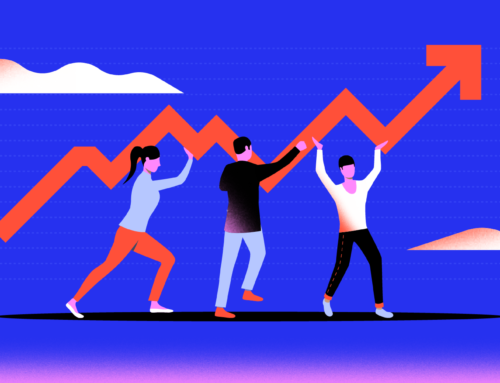Last Updated on October 24, 2021 – 6:59 pm
Success in the modern economy is dependent on the human element: picking the right staff members, motivating them, and developing them correctly. That’s why US companies spend 82.5 billion dollars on employee learning and development. Research shows that best-in-class employee development improves retention, productivity, and engagement. A study at Honeywell shows that productivity has increased by 4.7%. Another analysis concluded that total shareholder return climbed to 19.7% above industry standards.
Millennials also care about self-growth. A 2016 Gallup report found that 59% of millennials say opportunities to learn and grow are extremely important when applying for a job, while 87% say professional development is essential to them in a job. Still, less than 40% felt strongly that they had learned something new on the job. Indeed, several studies show that employee development can be problematic. Employee development programs suffer the common problem of being a composite of sometimes unrelated and irrelevant learning experiences with less or no follow-up.
Based on Journey’s recent people development report, here are a few ways your organization may be getting employee development wrong:
“It’s an HR thing.”
Developing employees is one of the most rewarding things a leader can do. Yet, many times, managers see employee development as HR’s job. In fact, “manager direction” is the biggest motivator for employees to develop themselves (LinkedIn study, 2018). 56% of employees say that they would spend more time learning and developing if their manager directed them to improve their skills.
When employee development discussions between employees and their supervisors were perceived as fair, it positively affected goal commitment, organizational commitment, and job satisfaction (Tansky & Cohen, 2018).
You do not provide guidance.
Many organizations want to involve managers in the employee development process. They ask them to talk about development in reviews and to assign (or confirm) development plans.
But here’s a reality check: our interviews with more than 120 managers reveal that managers do not know how to develop employees most of the time. They need guidance on identifying development areas, motivating the employee to improve, working with the employee to build an effective development plan, follow up, and evaluating the progress.
You try to hold two watermelons in one hand.
As Prasad Setty, VP of People Operations at Google, explains, “Traditional performance management systems make a big mistake. They combine two things that should be completely separate: performance evaluation and people development. Evaluation is necessary to distribute finite resources, like salary increases or bonus dollars. Development is just as necessary, so people grow and improve.”
The major problem with performance development systems today is that when managers sit down to give employees their annual review and salary increase, they focus on the extrinsic reward -a raise, a higher rating- and learning shuts down. In a nutshell, don’t confuse development with managing performance.
Your Employee Development is too infrequent.
In most companies, the employees meet with their managers to talk about development only once or twice a year. And managers do not usually follow up between these reviews.
Organizations should increase the frequency of development conversations between the manager and the employee. They need to create regular check-in opportunities and developmental experiences.
You only focus 10% (thus, you ignore 90% where development occurs)
In 1988, three researchers published an influential book called Lessons from Experience, How Successful Executives Develop on the job, which popularized the 70:20:10 model of learning and development. The book was based on qualitative data from executives who were asked to reflect on their careers and identify key experiences that led to a lasting change in their management and development. The study revealed that learning from experience is the number one way that people develop (70%), followed by learning from others (20%) and coursework (10%). “If I look at my years in large and small professional environments, I’d be hard-pressed to point to anything I do differently today as a result of training,” states Laszlo Bock, former Head of People at Google.
On-the-job experiences are a significant driver of leader development, particularly experiences that challenge people to lead in novel and diverse environments, create change in high-stakes situations, and work across organizational and cultural boundaries. Conversely, organizations continue to focus considerable time, money, and resources on the other significant sources of growth and development: education and training. For example, US companies spend $13.6 billion annually on leadership development (O’Leonard & Loew, 2012); the vast majority of this investment goes toward education and training.
You have no idea if it’s working or not.
Most companies track straightforward metrics such as completion rates of online/in-class learning or test scores. They probably also conduct post-class surveys. And that’s it. “Companies can tell how much time and money is spent on classroom training, but beyond that, it’s often just guesswork” states Laszlo Bock. Companies do not have qualitative data about manager involvement, development plans’ success, development goals, or the effectiveness of developmental activities.
In addition, companies need to take their learning and development data and connect it with the rest of their organizational performance metrics — retention, engagement, performance, for example. More significant investments in employee development are justified when HR leaders can prove the value of new programs to business outcomes.
Learn more about development plans and employee development, check out our white paper, People Development Report 2021.
If you want to learn more about employee development, you can check out our blog posts here.






Leave A Comment